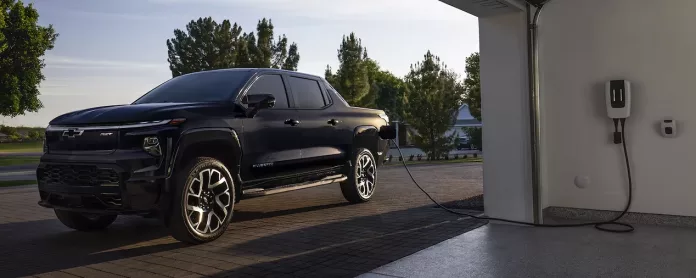The electric vehicle community is buzzing with excitement following a recent series of towing tests conducted by Out of Spec, featuring some of the most anticipated electric trucks. Viewers eagerly watched as the Cybertruck, Rivian R1T, Silverado EV, and F-150 Lightning faced off in high-demand scenarios, including a challenging trek through the Rocky Mountains not once, but twice, all while towing Tesla Model 3s.
The Rigors of Mountain Towing
Such a demanding test wasn’t solely about checking the range and charging efficiency; it crucially examined the trucks’ ability to handle descent on steep gradients. Previous tests have shown that both the Rivian and Cybertruck struggled to provide adequate regenerative braking without overheating the friction brakes. This makes the most recent challenge highly significant for understanding electric truck performance under extreme conditions.
Insight Into the Competitors
The F-150 Lightning brought an advantage with its NACS access, consistent charging curve up to 80%, and adaptive towing compensation in its software. Rivian, with its quad-motor setup and sizeable battery, demonstrated the convenience of its front charging port for hassle-free recharging while hitched. The Silverado EV boasted a massive battery, still estimating a 300-mile range under the given load, and the Cybertruck had previously shown its mettle in harsh towing tests.
With all trucks starting at 100% charge and adhering to a 5 MPH over the speed limit rule, the test was underway. Despite the lack of sophisticated trailer brake controllers, the surge brakes on the U-Haul trailers provided some level of automated stopping force, albeit with varying levels of user-friendliness.
Ascent and Regeneration Challenges
During the climb to the tunnel, energy consumption spiked, particularly for the truck with the largest battery. However, by the time they reached the peak, the trucks displayed comparable efficiencies with half of their charges depleted, except for the Silverado EV which impressively retained almost 70%.
The descent posed the anticipated regenerative braking challenge, with the Silverado leading in energy recovery, followed closely by the F-150 Lightning. Surprisingly, all trucks managed to reach Glenwood Springs, with the Silverado confidently projecting a reach to Grand Junction with 24% charge remaining.
Charging Woes and Weather Conditions
Charging hiccups impacted the Cybertruck’s performance, necessitating multiple reconnections. It eventually found respite at a faster charging station in Rifle. The Silverado, meanwhile, arrived at Grand Junction without issue, maximally leveraging the 350 kW charging capacity on the first attempt.
As temperatures dropped and snow fell, the return trip became more treacherous. This led to a strategic slowdown and a temporary halt for some trucks to ensure safety, waiting out the weather until conditions improved for a safe resumption of the test.
Final Outcomes and Observations
The conclusive winner of this rigorous electric truck rodeo was the Silverado EV, closely followed by the Rivian R1T and F-150 Lightning, while the Cybertruck trailed behind. Notably, regenerative braking performance emerged as a critical differentiator among the contenders.
Diving into the Data
For those interested in the nitty-gritty details, the Out of Spec team distilled their experiences and insights into a comprehensive podcast which thoroughly analyzes the trip’s data.
Reflecting on the event, it was suggested that the Cybertruck might have performed more competitively with the others, especially if it had utilized V3 Superchargers more strategically. Nevertheless, the Silverado EV demonstrated a towing performance that closely mimics the familiarity of gas or diesel experiences, signaling a significant leap forward in the electric vehicle sector. While it is undeniable that electric trucks have inherent challenges, particularly concerning charging logistics and the scarcity of pull-through stations, the Silverado EV showcased a competence that suggests a bright future for electric towing capabilities.


























